Those wanting to sweeten their coffee or even their favorite recipes should know the difference between two popular sweeteners used on the market. These well-known options are plain old regular sugar and allulose, the less common variant.
Allulose and sugar both add sweetness, but while they share that use as a sweetener, that’s about where their similarities end. In this article, we’ll answer your sweetest questions as to what sugar and allulose are, then dig deeper into their differences, benefits, and drawbacks, and how to use both.
Medical Disclaimer: as with everything on this site, this article is provided for information only. I strongly urge you to speak with your doctor or a licensed medical professional in order to assess whether or not you have histamine issues and/or other medical issues.
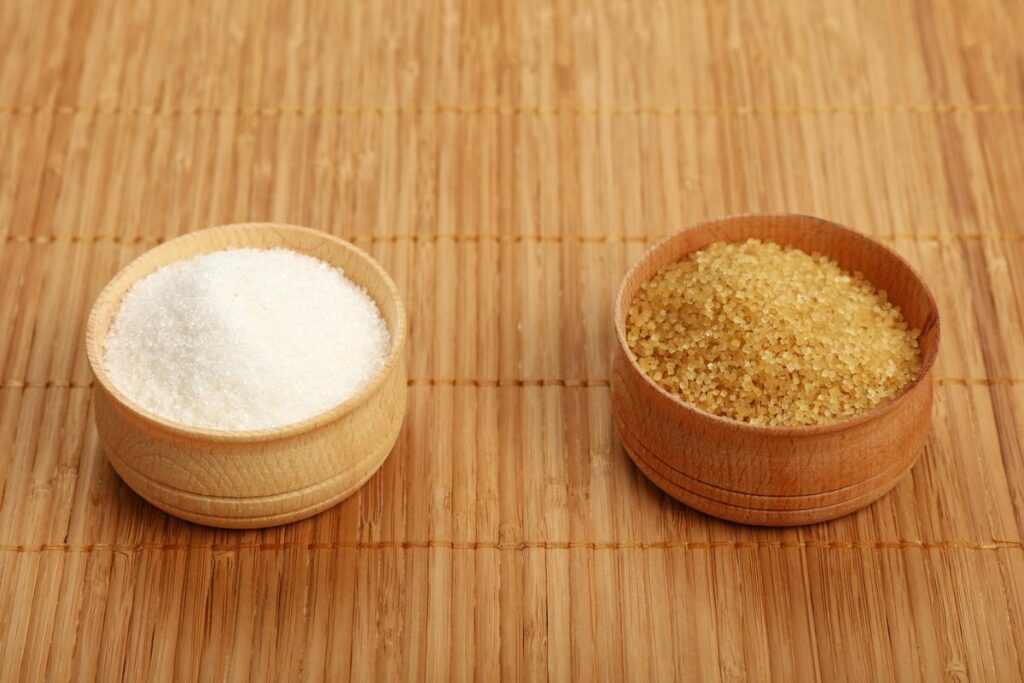
Jump to:
🤔 What is Sugar?
Sucrose, more commonly known as sugar, is a disaccharide that’s composed of two one-molecule sugars in its chemical structure. The structure consists of a glucose molecule linked to a fructose molecule.
Essentially, sugar is a simple carbohydrate. Carbs are an important macronutrient for the body, and the only fuel that can be used by the brain. However, even though it may seem healthy on paper, the problem lies in the fact that sugar is highly processed and is found in nearly everything we consume.
Sugar is an important and recurring part of daily life as it adds sweetness and texture to food and beverages like bread and coffee. It’s this exact abundance that leads to the risk of consuming too much of it, which in turn, brings about health issues such as obesity, type 2 diabetes, and heart disease.
Too much sugar can also contribute to weight gain, dental decay, and various metabolic disorders. According to the American Heart Association, sugar intake should be no more than:
- Women - 100 calories (approximately 6 tablespoons) of added sugar daily.
- Men - 150 calories (approximately 9 teaspoons) each day.

🔍 Where Does Sugar Come From?
Sugar can be found naturally in a variety of fruits and vegetables, although it’s most typically manufactured from sugar cane or sugar beets. Yet despite its natural background, sugar is still unhealthy. It’s the main culprit of obesity, type 2 diabetes, and other chronic diseases.
This is precisely why many people have turned to fully natural and healthier sweeteners like allulose. The sugar we see on shelves and some products comes from the commercial manufacturing of sugar, which involves several steps, from extracting juice from sugar cane or sugar beets all the way to refining it.
Sugar can also be manufactured into various forms by adjusting the degree of refining and the type of sugar cane or sugar beets utilized. Some examples of these forms are granulated sugar, powdered sugar, brown sugar, or raw sugar.
🥄 What is Allulose?
Allulose is a natural and often considered rare sugar found in tiny amounts in fruits such as figs, raisins, and jackfruit. This rarity was resolved, though, by commercially manufacturing it through the enzymatic conversion of fructose from other sources, mainly corn.
This unique sugar is also known as D-allulose or D-psicose, but we’ll refer to it as allulose for simplicity's sake. Allulose is different from regular sugar in that it’s a monosaccharide, which is a simple sugar that’s chemically comparable to fructose and glucose.
One significant reason why it’s considered a better sweetener is that it’s around 70% as sweet as sugar while containing only 10% of its calories. Allulose is also not digested by the body in the same manner as sugar, meaning it can have significant benefits for diabetics.
The sweetness without the calories has become one of this sweetener’s best selling points, as it surges in popularity among sugar alternatives. The versatility and similar bulky consistency make it perfect for sweet tooth cravings like ice cream, soft drinks, and more.
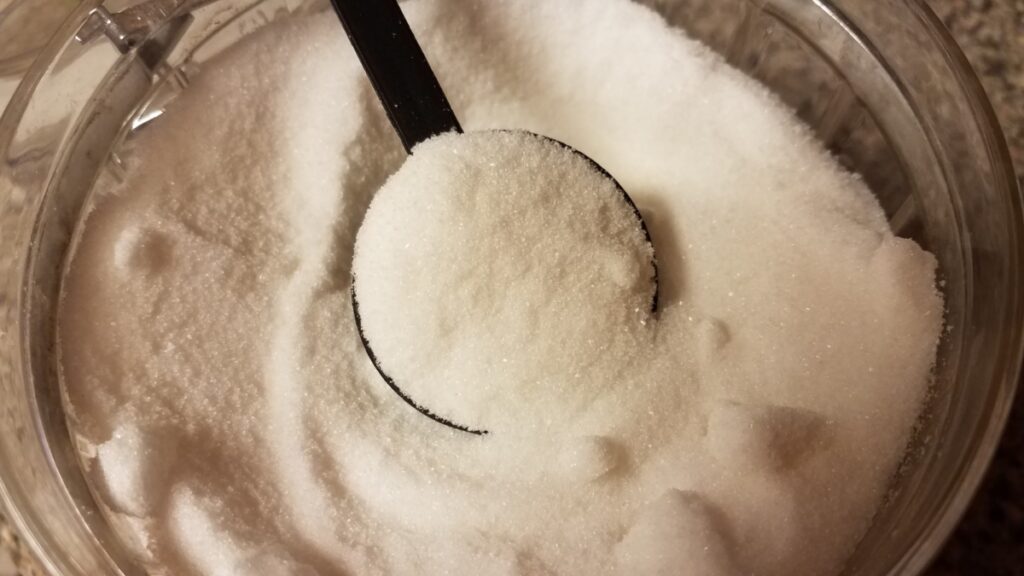
🤷🏻 Where Does Allulose Come From?
Allulose occurs naturally and can be found in trace amounts in plant diets such as fruits, though when obtained from natural sources, the yield is relatively modest.
Since raw allulose is quite scarce, scientists conjured a way to commercially derive this rare sweetener, which can now be obtained through a process known as enzymatic conversion of fructose from corn.
This process involves the transformation of corn kernels into starch, which is then processed into syrup. The syrup is then treated with an enzyme, converting some of the glucose into fructose and, subsequently, allulose. The end result is allulose extract, a highly concentrated sweetener.
🥊 Allulose vs. Sugar: The Showdown
Let’s start with how the two are derived and what processes they go through in order to distinguish them better. Sugar is made from sugar cane or sugar beets that undergo a refining process to remove impurities and water to generate a crystalline form of itself.
On the other hand, allulose is a rare sugar found in trace amounts, though commercially created on a larger scale through the enzymatic conversion of fructose from corn.
There is more to it than their origin and production process, as allulose and sugar have other differences that can bring out a clear winner between them.
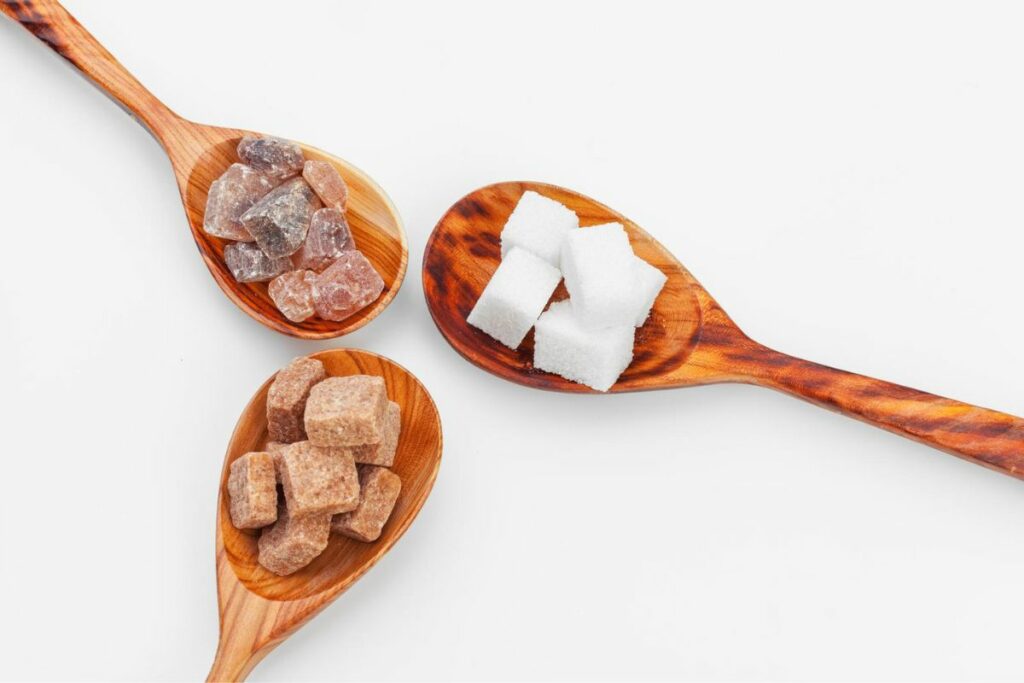
📝 Sugar and Allulose: Nutritional Properties
Sweetness Level and Taste
The first and arguably most crucial distinction between allulose and the other natural sweeteners is that it has a taste and texture comparable to sugar (with only a fraction of the calories).
It’s clean and sweet without the bitter aftertaste that other artificial sweeteners may have, though there might be a slight cooling effect. Allulose is also roughly 70% as sweet as table sugar, whereas sugar is 100% sweet, so this means more allulose may be required to reach the same sweetness as sugar.
Safety
The U.S. FDA considers allulose and sugar generally safe with the official GRAS (Generally Recognized As Safe) label, though both in moderation.
This doesn’t include the fact that consuming too much sugar can lead to health issues such as obesity, diabetes, and heart disease. This is why people are seeking alternative sweeteners to replace it, such as allulose, as it’s been seen to have no effect on blood sugar or insulin levels.
When it comes to diabetics or people looking to cut back on sugar, allulose is the better option between the two. I won’t get into all the studies about why sugar is bad for us, but here are a few significant ones.
According to Harvard research, those who consume a lot of added sugars have a higher risk of dying from heart disease than people whose diets aren’t as sweet. Sugar also promotes weight gain, and with weight gain, eventually obesity. This can be caused directly by a high-sugar diet, which increases the risk of diabetes, high blood pressure, and high cholesterol.
Another study stated that sugary diets raise triglyceride levels, with higher levels resulting in an increased risk of heart disease. It can also increase LDL cholesterol (bad cholesterol), clogged arteries, high blood pressure, and inflammation.

Calorie Content
When compared to table sugar, which has 4 calories per gram, allulose has between 0.2 and 0.4 calories per gram (or ¼ teaspoon). Sugar’s calories, though, are also what we call empty calories, as they contain no nutrients.
Allulose is the opposite of sugar, with around 10% of the calories found in the same amount of table sugar, resulting in fewer calories in the diet and reducing the number of net carbs that must be counted.
GI Score
Allulose has a 0-1 glycemic index, while regular sugar has a GI score of 65. The former has no effect on blood glucose or insulin levels, making it a suitable alternative for people who have or are at risk of developing type 2 diabetes.
Nutritional Value
Sugar gives energy, but other than that, nothing else. On the contrary, studies show that allulose provides other significant health benefits, including anti-inflammatory properties, improved insulin resistance, glucose metabolism, and a lower risk of obesity.
Sugar consumption, both in quantity and frequency, can increase the risk of dental decay as it dissolves in the mouth. This is contrary to allulose, as it doesn’t degrade in the mouth, meaning it neither promotes the growth of oral germs that cause cavities nor contributes to enamel erosion.
Another nutritional value found by a study shows that allulose encouraged the synthesis of short-chain fatty acids, which are good for gut health and inflammation reduction.
Allulose has also been shown to have prebiotic properties that help healthy bacteria proliferate in the digestive tract and manage obesity by decreasing lipogenic enzymes in the liver.

🍽️ How Are Sugar & Allulose Digested By the Body?
When we consume foods and beverages with sugar, enzymes in our saliva begin to break down the sugar molecules. This is where our bodies then convert the substance into glucose, a type of sugar that may be used for energy.
This substance is then further broken down by digestive enzymes in the stomach before being absorbed into the bloodstream. Glucose then flows to the liver, where it’s either stored as glycogen or released back into the bloodstream for energy by the body’s cells.
About 70% of the allulose we consume is absorbed by the small intestine but isn’t metabolized by the body and travels quickly through the body, leaving within 24 hours (via urine). The remaining 30% passes via the large intestine and exits the body within 48 hours (excreted in the feces).
👩🏻🍳 So Which Is Better?
While both sugar and allulose can be used as sweeteners, allulose is undoubtedly a better choice on paper due to the lower calorie content, lower net carb count, and zero to low GI score.
Individuals with diabetes or those on a low-sugar or low-carb diet may benefit from allulose, as it does not affect blood sugar levels or lead to tooth decay. Allulose also avoids packing on any extra weight, thanks to its low-calorie content, meaning less glucose storage.
There are some disadvantages to utilizing allulose as a sweetener, though, such as its high cost, restricted availability in some places, and novelty. Since it’s still relatively new, further study is required to properly comprehend its potential advantages and disadvantages.
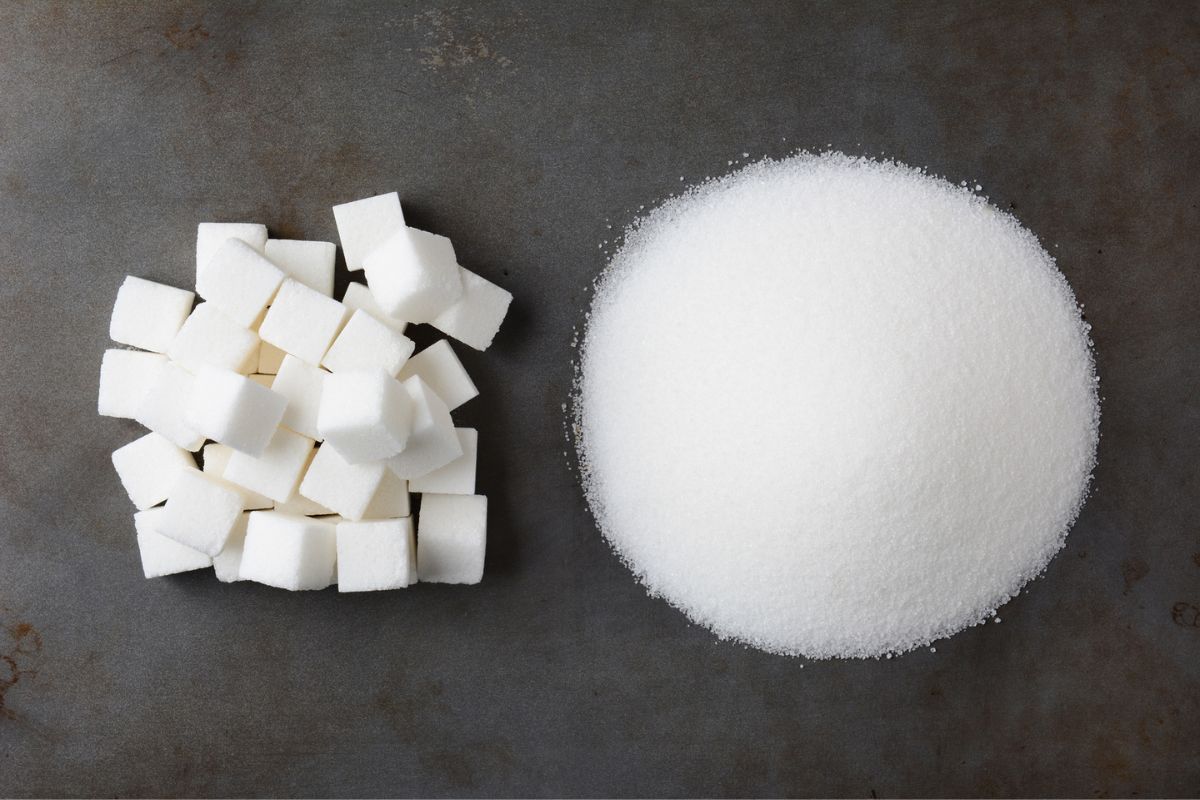
📖 How to Use Sugar and Allulose
Sugar has many important culinary and baking uses, such as adding sweetness to various foods and beverages, including baked goods, desserts, coffee, tea, and other drinks. It can also aid in creating beautiful golden brown colors on many dishes.
This is because when sugar is heated, it caramelizes, giving it a brown hue and a rich flavor. Sugar is also used to preserve jams, jellies, and other preserves due to the high sugar content that helps to keep germs and other microbes at bay.
It also feeds yeast in bread and other fermented foods, as the yeast consumes the sugar and produces carbon dioxide, aiding in the rising of the dough. Another use case is to add texture and bulk up baked goods. It can also help create a tender crumb in cakes and muffins and crisp the outer crust on cookies and pastries.
Allulose can be used the same way as sugar, just not in the same quantities, as it’s less sweet than conventional sugar. While allulose is not as sweet as sugar, it can be used in the opposite way to lower the overall amount of sugar in your recipes.
Though allulose can cause baked foods to brown faster, so you’ll need to increase the baking time or temperature.













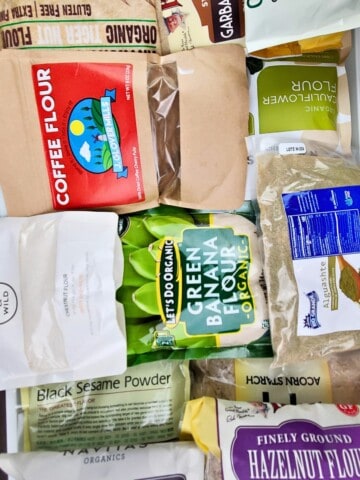
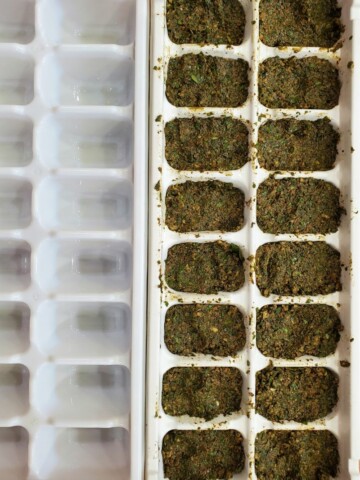


Comments
No Comments